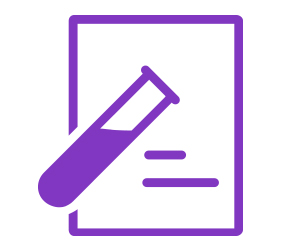What is Diabetes?
Diabetes is a condition in which the level of glucose (sugar) in an individual’s blood becomes too high because the body cannot use it properly. Insulin controls the movement of glucose into most of the body’s cells and maintains blood glucose levels within a narrow range. Most tissues in the body rely on glucose for essential energy production. In diabetes there is disruption between the normal balance of insulin and glucose. Usually after a meal, carbohydrates are broken down into glucose and other simple sugars, stimulating the release of insulin into the bloodstream. If there is insufficient or ineffective insulin, glucose levels remain high and the body’s cells ‘starve’. This can cause both short term and long term problems. In the short term it can cause dehydration by upsetting the body’s electrolyte balance. If unchecked, this can eventually lead to much more serious issues such as kidney failure. Over time, high glucose levels can damage blood vessels, nerves and organs throughout the body, contributing to other problems such as high blood pressure and heart disease.
How is diabetes diagnosed?
Diabetes is diagnosed either by measurement of either HbA1c or glucose in blood.
How does the HbA1c test work?
The HbA1c test is able to identify diabetes and monitor blood glucose levels in diabetic patients. As glucose circulates in your blood, some of it slowly binds to
haemoglobin (the protein that carries oxygen in your red blood cells). This combination is called haemoglobin A1c (HbA1c). The amount of HbA1c formed is directly related to the amount of glucose in your blood.
If diabetes is not well controlled, blood glucose levels are high, causing elevated HbA1c levels. The HbA1c remains in the red cells of the blood until they are removed from the body which takes about 3 months The amount of HbA1c in your blood reflects the average amount of glucose in your blood during the last few months. No preparation is required for your HbA1c test and it can be performed at any time of day. Blood is drawn from the arm and HbA1c levels are then analysed. Patients who
are diagnosed with diabetes must come back every 3-6 months for further tests to monitor HbA1c levels.
For more information please download the HbA1C Brochure
Glucose Tolerance Testing
The glucose tolerance test measures how well your body's cells are able to absorb glucose, or sugar, after you ingest a given amount of sugar. The glucose tolerance test can be used to screen for Type 2 diabetes. More commonly, a modified version of the glucose tolerance test is used to diagnose gestational diabetes — a type of diabetes that develops during pregnancy.
For instructions about the collection of the Glucose Tolerance Test or the Glucose Challenge for Gestational Diabetes please download the following brochures.
Have you received a letter regarding your next diabetes appointment?
- Why did I receive this letter?
Your doctor has enrolled in our Diabetes Clinical Evaluation Program, which supports GPs by helping doctors send out reminders to make sure their patients keep up to date with the blood tests recommended for appropriate diabetes monitoring. This is an optional program for doctors that refer pathology to Australian Clinical Labs. If your doctor is enrolled in this program, you may receive reminder and recall letters from him/her, advising your review or testing is due.
- Can I opt out of receiving these letters?
Receiving a pathology request form can save you time – complete the testing before your next practice visit and your doctor will have those valuable results waiting to review with you. If for any reason you’d like to opt out of the reminder service please click here and fill in the details.





